Alligator Tracks and Sign – Part I
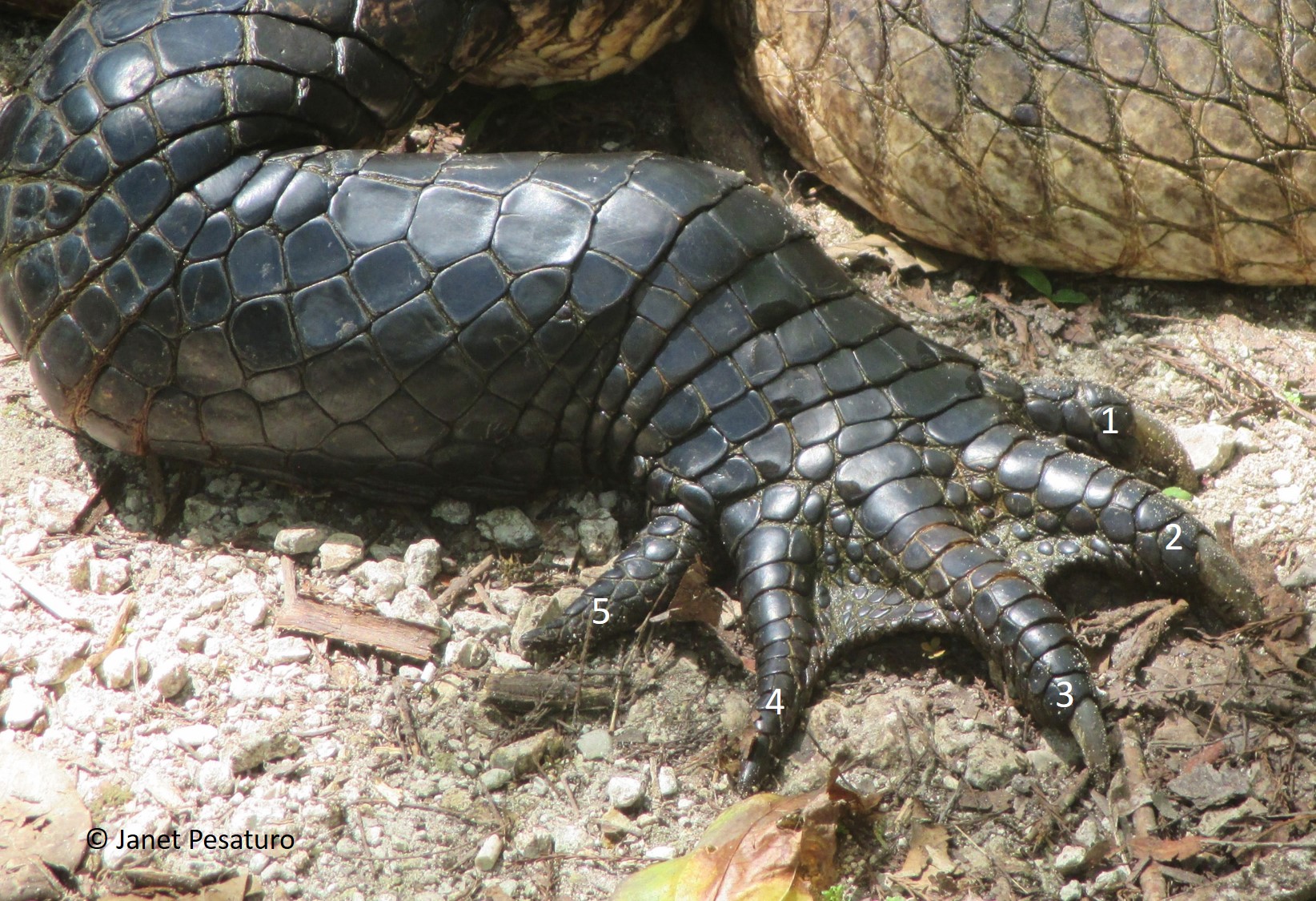
Once on the brink of extinction, the American alligator, Alligator mississippiensis is now common within its range in the southeastern US. In fact, it’s abundant in some areas and I got to see this firsthand while exploring the cypress swamps of south Florida a few years ago to track this large reptile, as well as the Florida panther. The panther was more of a challenge, but there was plenty of opportunity to study alligator tracks and sign in depth. There wasn’t space in my book for many of my photos so I thought I’d expand on the alligator chapter here. You’ll find a lot more on alligator biology and behavior relevant to camera trapping in the book, but this and my next post will expand on tracks and sign.
Tracks
Because alligators range in size from 9 inch long hatchlings to 15 foot long adults, there is an enormous range in track size. Front tracks measure up to about 5 inches long and 4 inches wide. Hind tracks measure up to about 8 inches long and 5 and 1/3 inches wide. Because alligators continue to grow throughout life, an occasional individual may exceed 15 feet in length and have even larger tracks.
Alligator front feet have five toes. Study the photo of the foot (above) and that of the track (below) to see which toes have claws and which spaces have obvious webbing. Only the first three toes have claws. There is substantial webbing between toes 2 and 3 and between toes 3 and 4, but no webbing between toes 4 and 5. I’m not sure if there is webbing between toes 1 and 2 because I never got a good look.
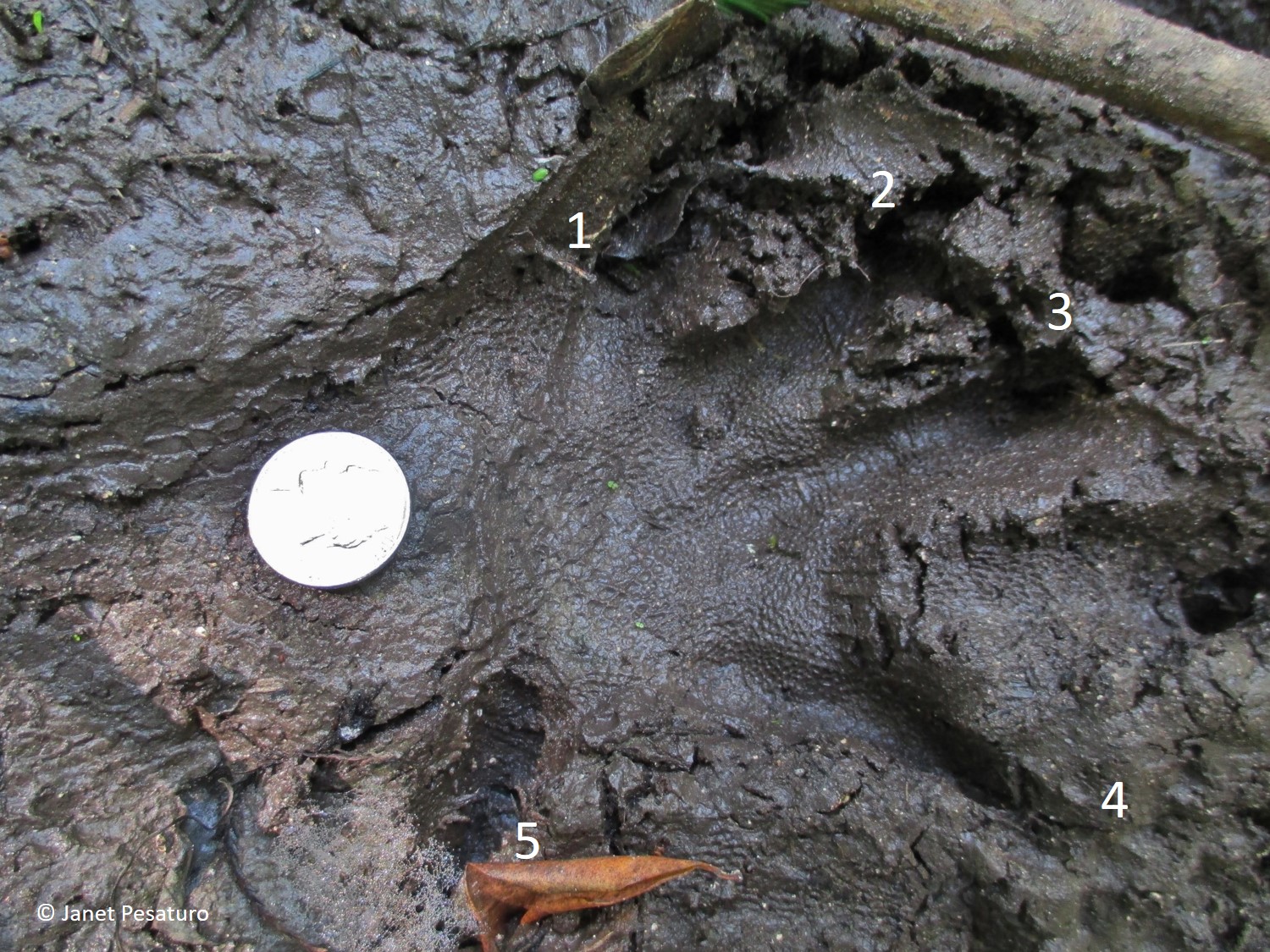
Alligator hind feet have only four toes, and as with the front feet, only the first three toes have claws. All toes generally point forward, with toe 4 pointing slightly out to the side. There is substantial webbing between toes 3 and 4, and probably more limited webbing between toes 1 and 2 and between toes 2 and 3.
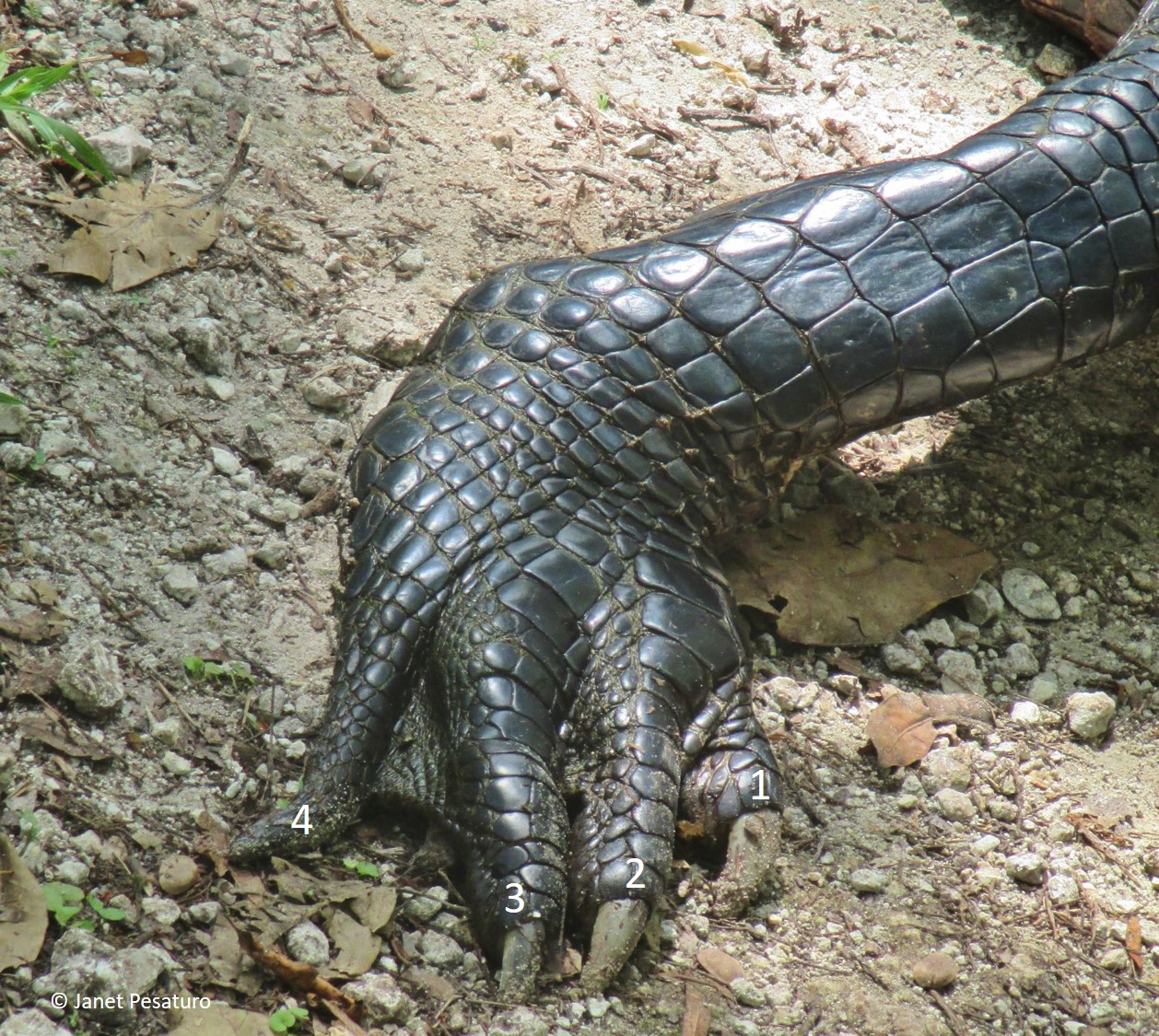
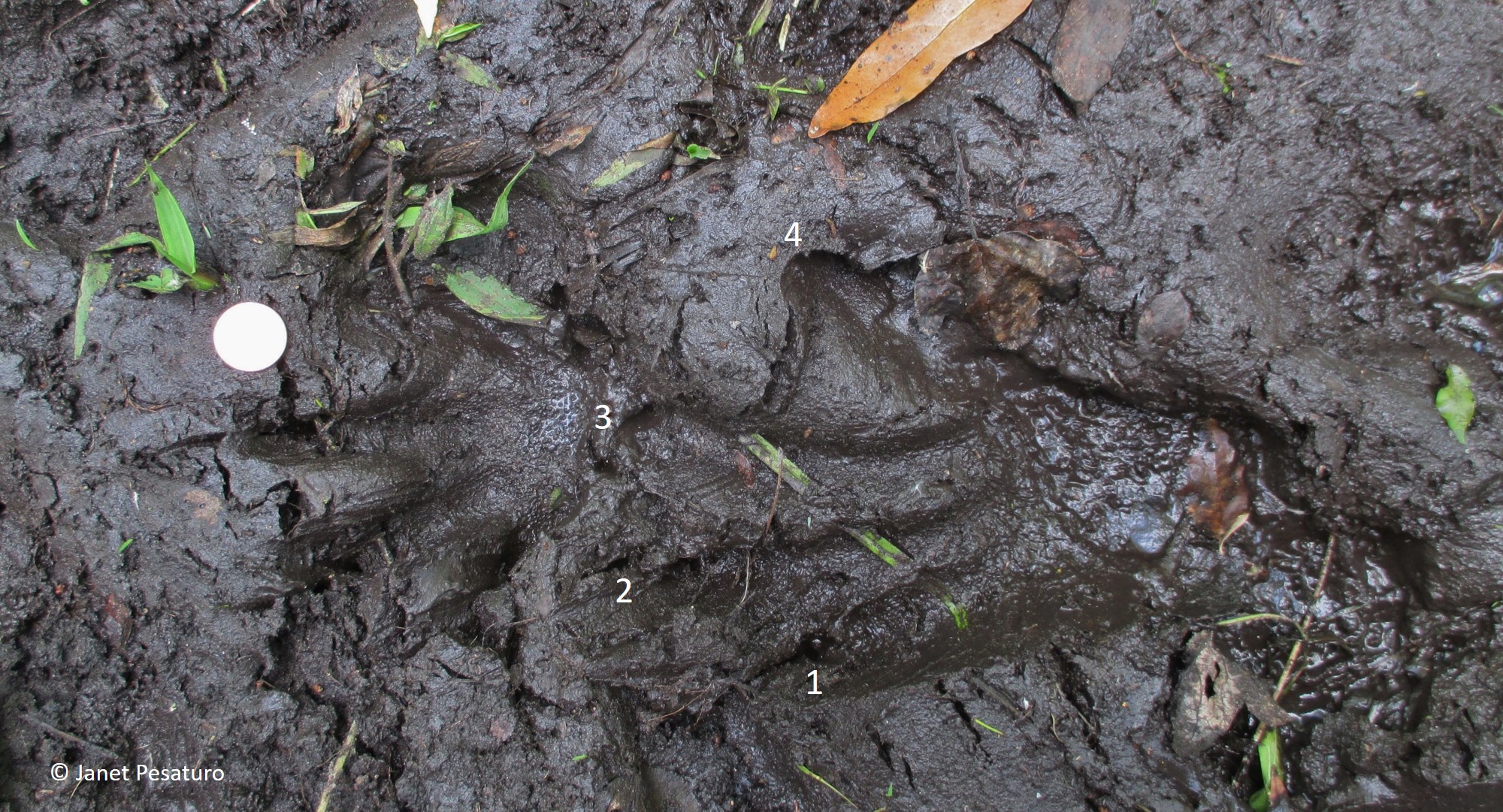
Scat
Alligators do not urinate: Both feces and nitrogenous waste are excreted through a single opening – the cloaca. The scat has a unique consistency which makes it hard to confuse with that of any other animal. Because alligators have powerful digestive juices, you generally do not find hair, bones, or other recognizable remains in the scat. Rather, it is uniform and clay-like. It is brown when fresh and fades to beige, buff, or olive as it dries. When completely dry it is white and crumbly. The size of the scat depends on the size of the animal. An enormous specimen can produce droppings of several inches in diameter. Hatchlings produce tiny scats.
Alligators do not drop scats strategically for marking purposes the way some mammals do; an animal simply deposits one wherever it happens to be when it has to eliminate. Therefore, scat accumulations reflect time spent by the animal in that spot.
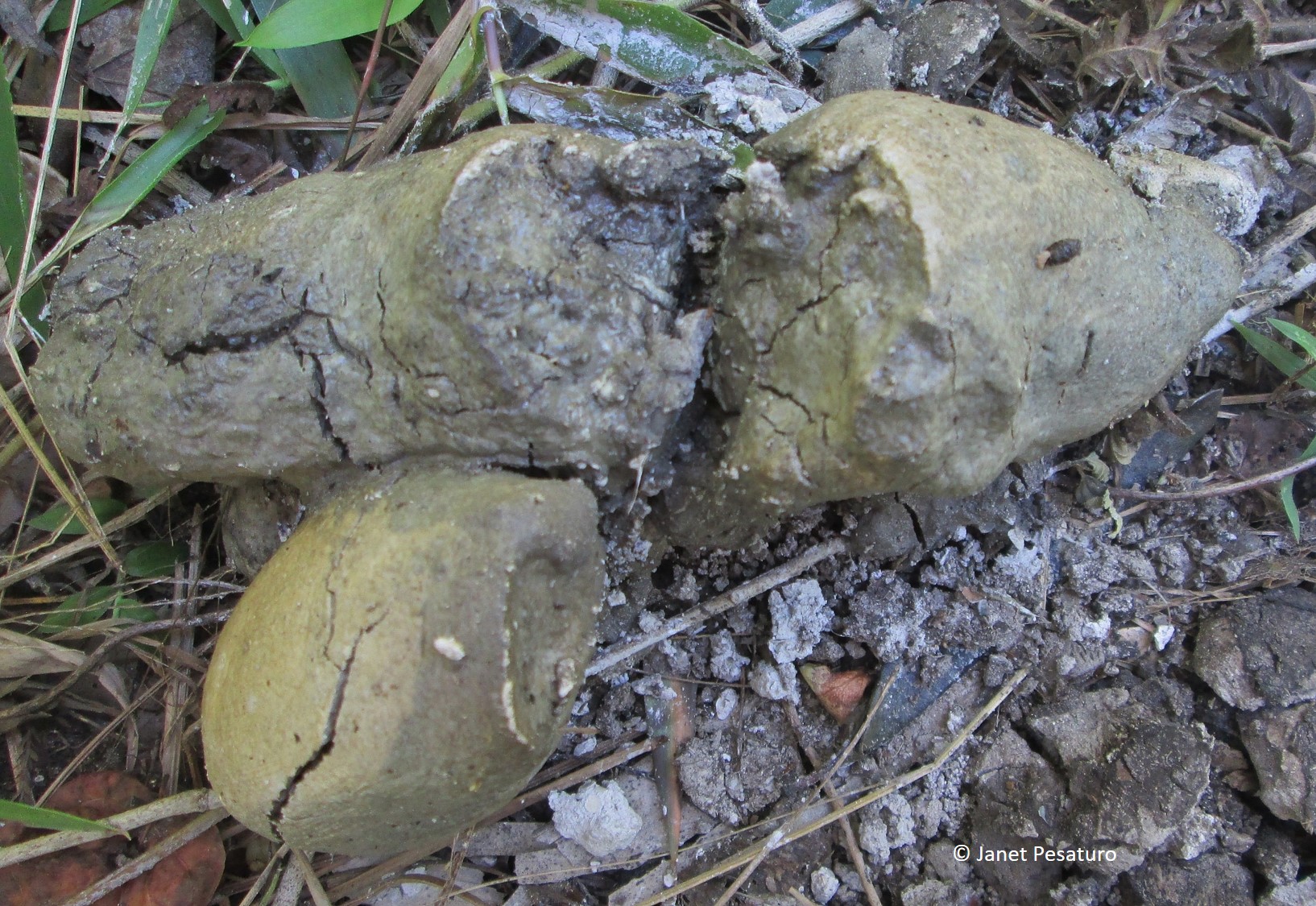
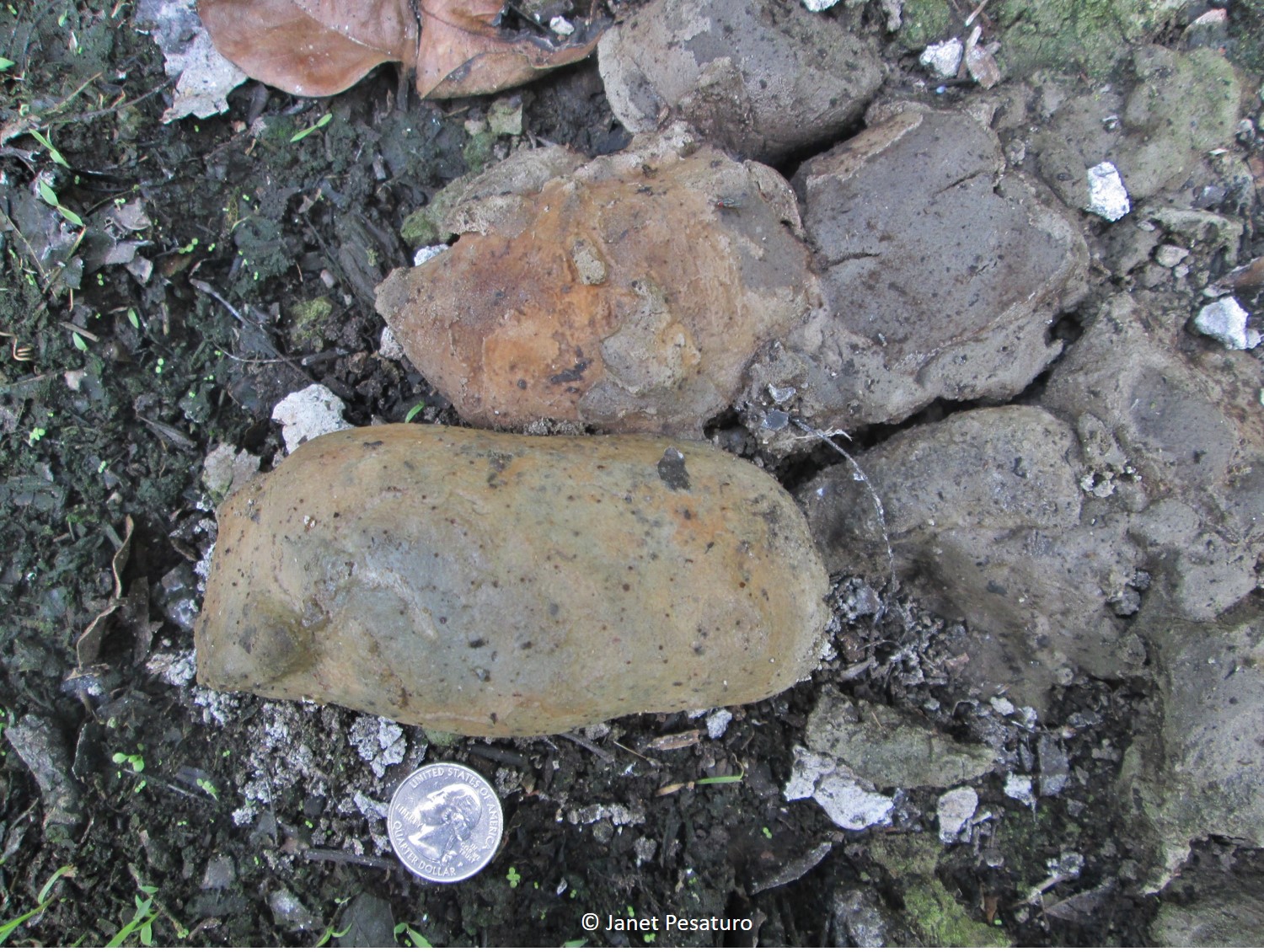
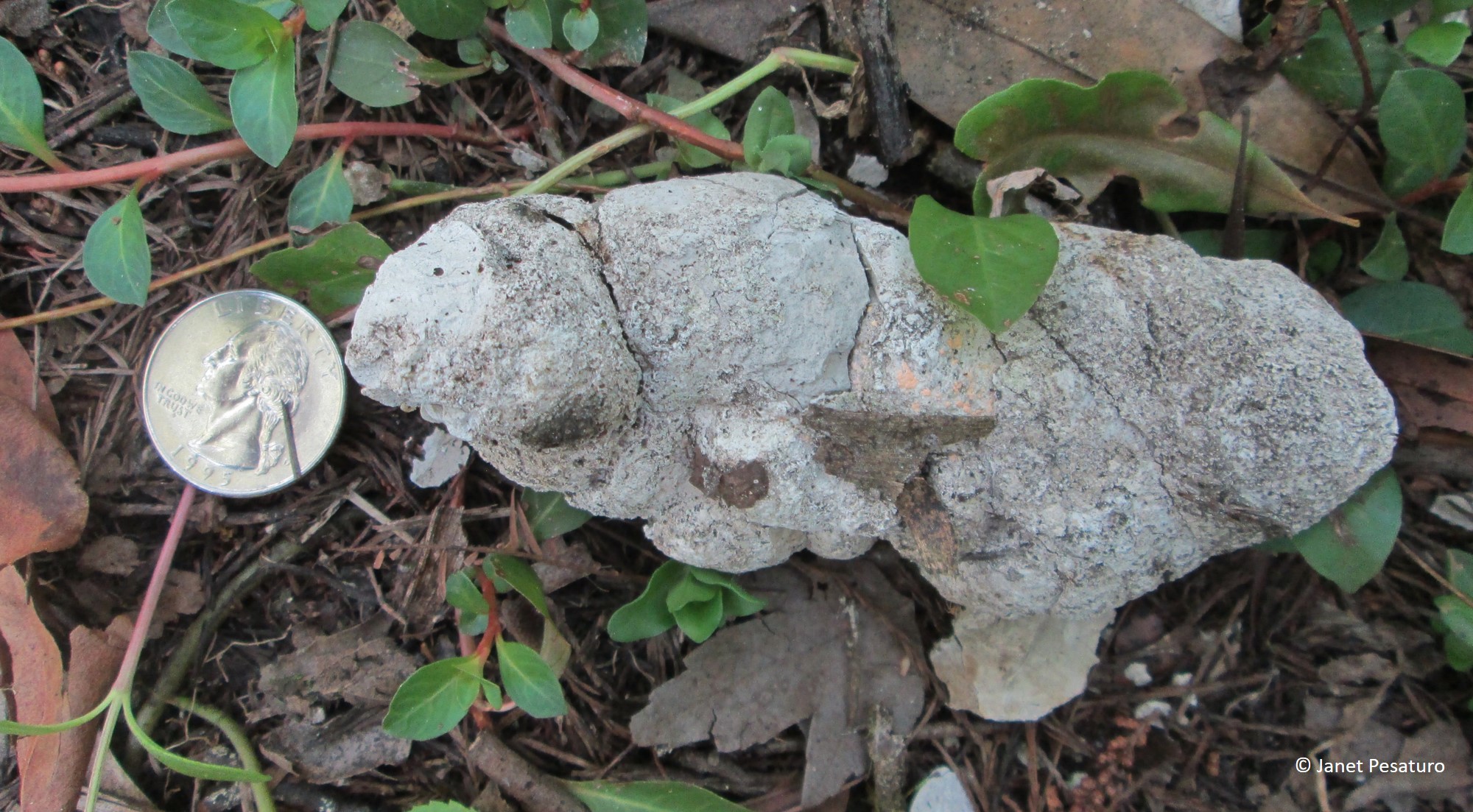
Basking Areas
Alligators spend a great deal of time basking in the sun. Each animal has favorite basking areas and these are easy to find if you can recognize alligator scat. Because these spots are used repeatedly, scat tends to accumulate, so look for these collections in sunny spots. A recently used basking area will have some fresher droppings. The diameter of relatively intact scats will tell you whether a small or large animal used that spot.
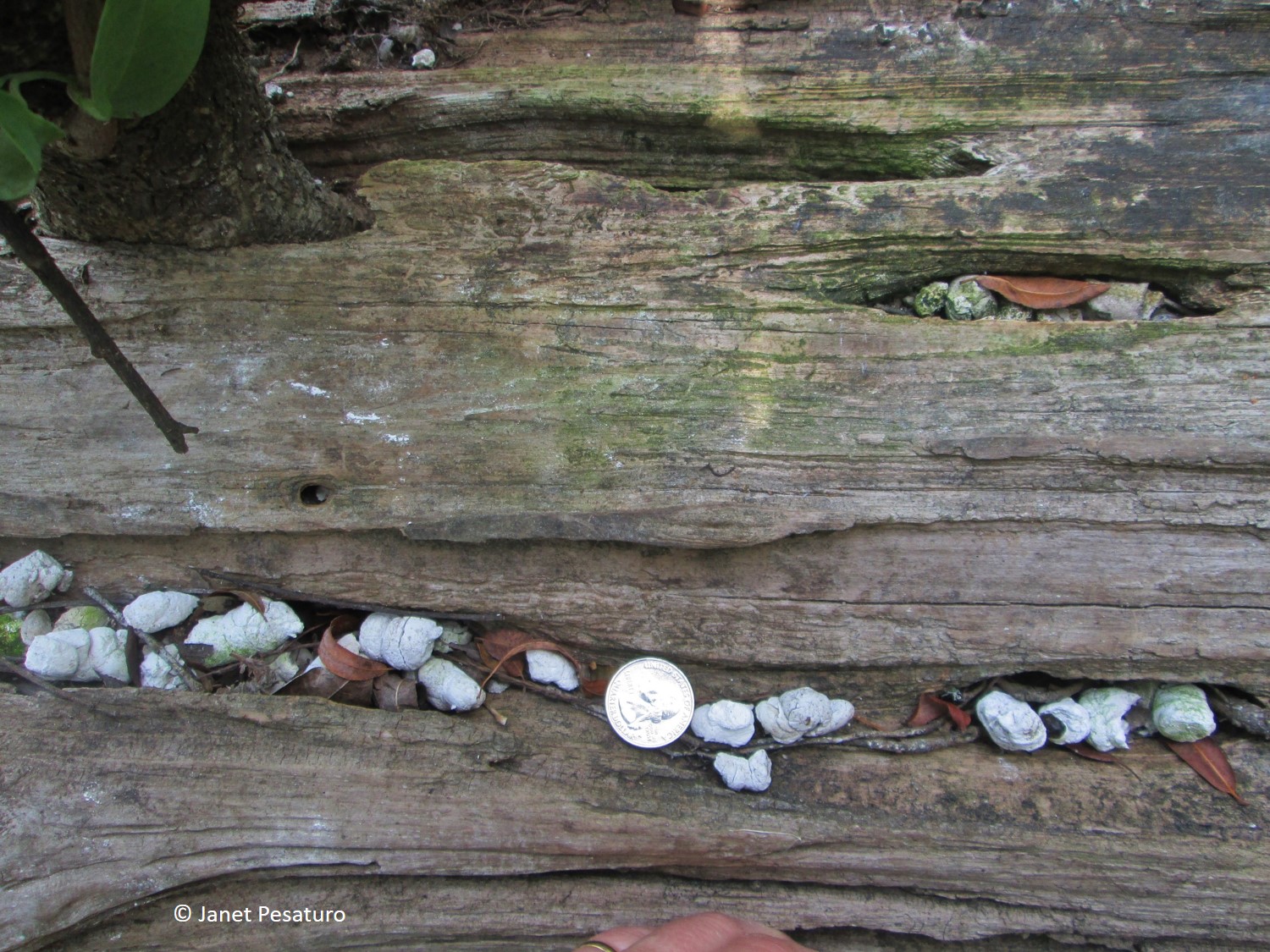

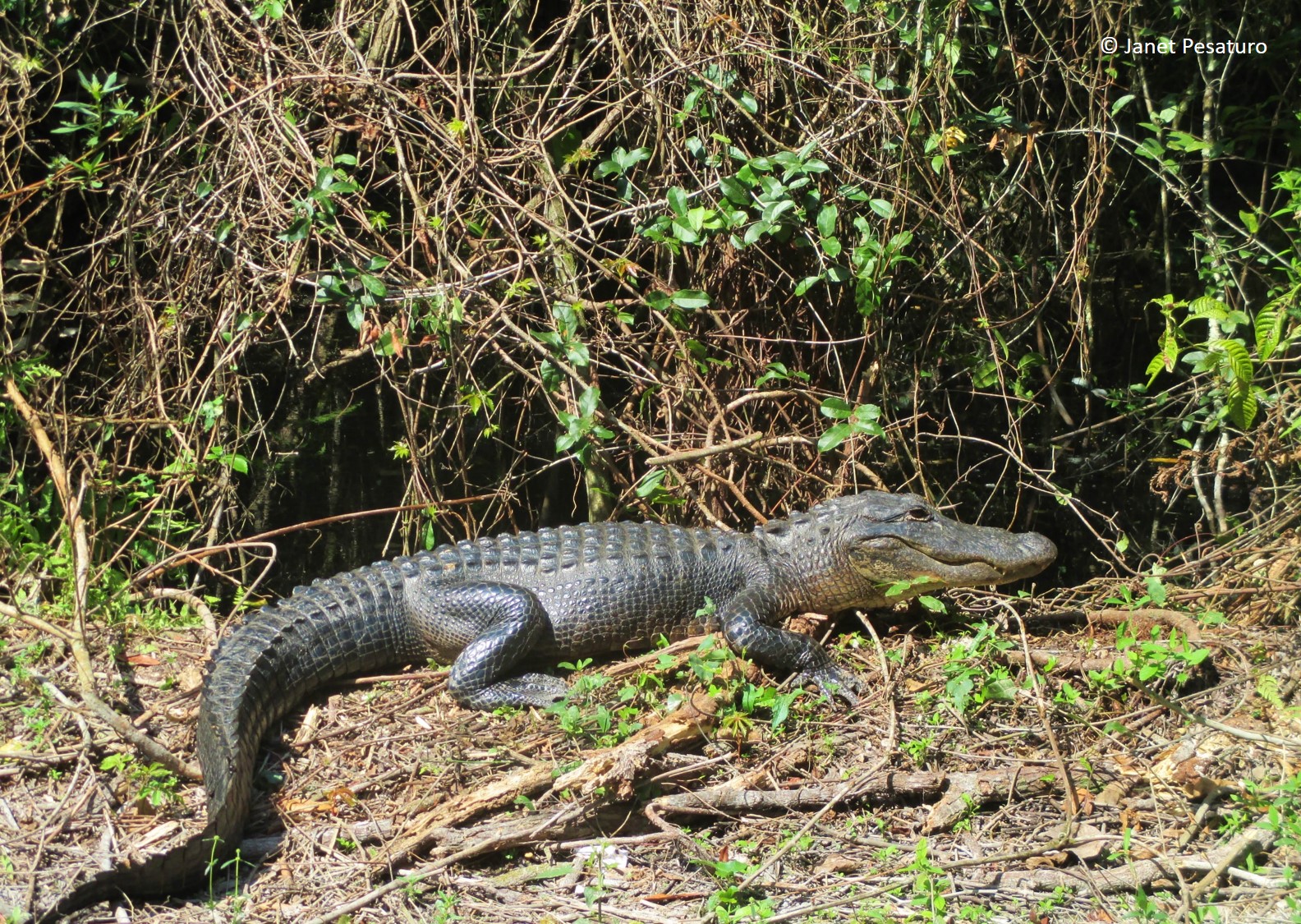
Sources
Tkaczyk, F. Tracks and Sign of Amphibians and Reptiles: A Guide to North American Species. Mechanicsburg, PA: Stackpole Books, 2015.
Stay tuned for Part II of Alligator Tracks and Sign.

That is so cool to see them in their natural habitat. Great pictures as always!
Glad you enjoyed it, Patty!
Thank You for Sharing :).
I enjoy all that you email to me 🙂
My pleasure 🙂
Interesting, Janet, to see your commentary and photos of alligator track and sign – I always learn something.
If anyone is interested, Tim Harrell on youtube has a lot of trail cam vids of panthers, bears, alligators, and other flora and fauna taken in The Fakahatchee Strand Preserve State Park in Florida.
Thanks, Sandy, I will check out that youtube page. Sounds interesting!
Holy gate batman! That is some very good info and thank you so much for sharing!
I’m glad you found it useful!
Here in South Carolina alligators are just about everywhere … I only see more than one when it’s a mamma with her young. On Daniel Island, near Charleston they live in many the ponds that dot the landscape and marshy rivers and inlets. I’ve never seen scat or tracks, or heard their roar, but some big ones are here on the property where I live-8 to 12 foot. They are shy, and keep distance. I am respectful and curious- and mostly have lost my terror of them! Once one came after my Pointer at waters edge, and left 3 claw marks on his behind, didn’t break the skin- but took the hair off! That one was at least 10 ft. Whew! He has good instincts and jumped sky high and ran like hell!
Thanks for the information, very helpful.
I’m glad your dog was ok! It’s also good that most alligators are shy in your area. We encountered some rather bold ones in FL. Not aggressive, just not at all afraid of people. Like if they were basking on the trail, they wouldn’t budge when we were trying to get past them! Fascinating creatures, though.
Is there a way to estimate the size of an alligator based on their track? Distance between front and rear claw? Size of front or rear claw?
I’m sure there is, since larger gators have larger feet, but I don’t have specific track measurements to correlate with specific gator sizes. Under “Tracks” in the post, the largest in the range would be for an approximately 15 ft gator. Beyond that, I would only guess.